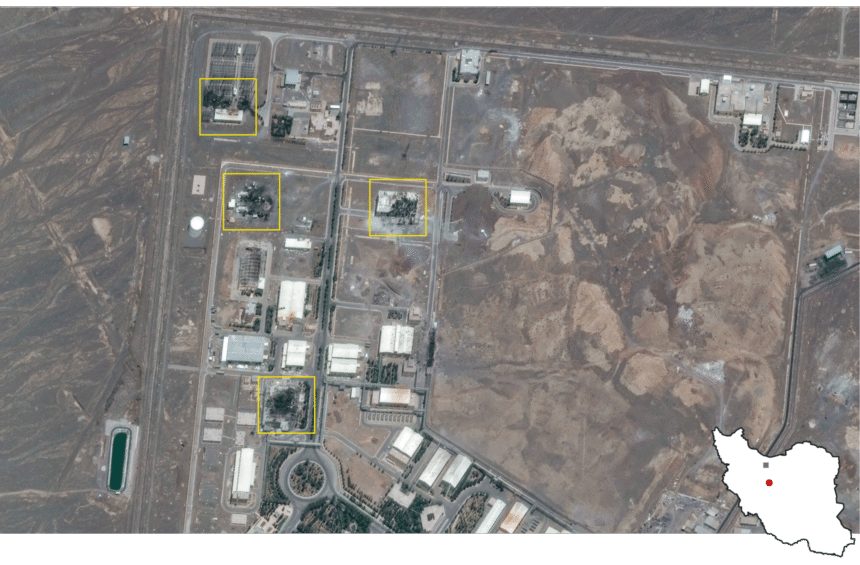In the ever-evolving geopolitical theater of the Middle East, few nations have occupied the U.S. security radar as prominently as Iran. And for former U.S. President Donald Trump, the Islamic Republic has remained a persistent focal point of strategic concern. Recently, reports have emerged revealing that Trump has been probing his aides about the effectiveness of U.S. bunker-buster bombs—specialized munitions capable of penetrating fortified underground targets—specifically in the context of Iran’s nuclear facilities. The revelation underscores a deeper and more consequential narrative: the continuing entanglement of political ambition, military strategy, and international diplomacy.
This article explores the implications of Trump’s inquiries, the capabilities of the U.S. bunker-buster arsenal, the state of Iran’s nuclear program, and the risks and ramifications of a potential military confrontation with Tehran—whether under Trump’s leadership or in the future.
Trump’s Renewed Focus on Iran’s Nuclear Threat
Donald Trump’s focus on Iran is hardly new. During his presidency, he withdrew the United States from the 2015 Joint Comprehensive Plan of Action (JCPOA), arguing that the deal was flawed and insufficient in curbing Iran’s long-term nuclear ambitions. His administration adopted a “maximum pressure” campaign involving crippling sanctions and diplomatic isolation. Now, even out of office and while campaigning for a potential return to the White House, Trump reportedly remains preoccupied with Iran’s nuclear infrastructure.
According to insiders and intelligence sources, Trump has recently asked several aides and military advisors whether the U.S. still possesses the capability to destroy Iran’s nuclear enrichment sites using bunker-buster bombs. His line of questioning, though speculative and unofficial, signals a persistent interest in military options, even in the absence of a direct provocation or an imminent threat.
The Technology: What Are Bunker-Buster Bombs?
Bunker-buster bombs are designed to penetrate hardened underground facilities, including bunkers, tunnels, and reinforced command centers. The United States’ most formidable example is the GBU-57A/B Massive Ordnance Penetrator (MOP), a 30,000-pound bomb capable of burrowing through dozens of feet of reinforced concrete and rock.
Developed to address the challenge of deeply buried nuclear sites, the MOP is the primary tool in the U.S. arsenal meant for scenarios where conventional bombs are inadequate. Iran, fully aware of this threat, has built its most sensitive nuclear infrastructure—such as the Fordow enrichment facility—deep within mountain ranges, shielded from conventional airstrikes.
Trump’s specific interest in these capabilities raises questions about his strategic calculus. Would a strike actually delay Iran’s nuclear progress significantly? Would such an action ignite a wider war in the Middle East? And would the U.S. military sign off on such a mission?
Iran’s Nuclear Program: A Persistent Provocation?
Despite numerous sanctions and international efforts to curb its ambitions, Iran’s nuclear program has advanced steadily, particularly since the collapse of the JCPOA following Trump’s 2018 withdrawal. According to the International Atomic Energy Agency (IAEA), Iran has enriched uranium up to levels close to weapons-grade and continues to restrict international inspections at key facilities.
Tehran maintains that its nuclear program is purely for civilian energy purposes, yet its actions tell a more ambiguous story. Western intelligence agencies and Israeli defense forces have long contended that Iran is maintaining the capability to “break out” and produce nuclear weapons if it chooses to do so.
For Trump and other hawks in Washington, this ambiguous status quo is unacceptable. The idea of a nuclear-armed Iran—already a powerful regional actor with influence in Iraq, Syria, Lebanon, and Yemen—presents an existential challenge to U.S. allies like Israel and Saudi Arabia, and a direct threat to American interests in the region.
Risks of a Preemptive Strike
Despite the tactical appeal of a limited airstrike targeting nuclear infrastructure, military experts caution that such actions carry profound risks. Iran’s facilities are scattered, hardened, and heavily defended. A successful strike might delay the nuclear program, but it is unlikely to destroy all capabilities permanently.
Moreover, Iran would almost certainly retaliate. This could include missile strikes on U.S. bases, attacks on Israel, mobilization of proxy groups like Hezbollah and the Houthis, and disruption of global oil flows through the Strait of Hormuz. The result could be a regional war with massive humanitarian and economic consequences.
Furthermore, international opinion might not support such a unilateral move, especially if intelligence justifying the strike is ambiguous or classified. Many U.S. allies still support diplomacy and the restoration of the JCPOA or a new nuclear accord. A military strike could fracture global coalitions and re-isolate the United States diplomatically.
Political Calculations and Election Year Dynamics
Trump’s bunker-buster curiosity may not simply be about military readiness; it may also be a political signal. As he positions himself for a possible return to the White House in 2025, Trump is attempting to project strength on foreign policy. A hardline stance on Iran plays well with key segments of his base, particularly evangelical voters and staunch defenders of Israel.
However, this raises concerns about the politicization of military strategy. Leveraging national security narratives for electoral gain has precedent in U.S. history, but the stakes in this case are exceptionally high. Even discussing such options publicly could embolden Iranian hardliners or provoke a response that spirals into crisis.
The Role of the Military and Intelligence Community
Reports indicate that some of Trump’s former national security aides are uneasy about his revived interest in Iran strike options. During his presidency, senior officials often sought to temper or delay military decisions that they viewed as rash or escalatory. In 2020, after Iran-backed militias attacked U.S. assets, Trump ordered the assassination of General Qasem Soleimani—an action that almost led to full-scale war.
If Trump were to regain the presidency and revisit military options, the Pentagon and intelligence community would play a crucial role in shaping, or restraining, any operational plans. It remains unclear whether these institutions would endorse a strike without overwhelming evidence of an imminent threat.
Conclusion
Trump’s reported inquiries into bunker-buster capabilities are not just idle curiosities. They reflect a broader strategic and political outlook that sees Iran not only as a security challenge but also as a symbol of American strength—or weakness—on the global stage. Whether this interest manifests in future action remains speculative, but it highlights the fragile and combustible nature of U.S.-Iran relations.
The prospect of a unilateral military strike on Iran’s nuclear facilities would be among the most consequential decisions any American president could make. It would define not only U.S. foreign policy but potentially reshape the entire Middle Eastern security landscape. As the 2024 election approaches and Trump reasserts himself on the world stage, his views on Iran—and whether he believes bombs, not diplomacy, are the answer—deserve close scrutiny from both American voters and the global community.










